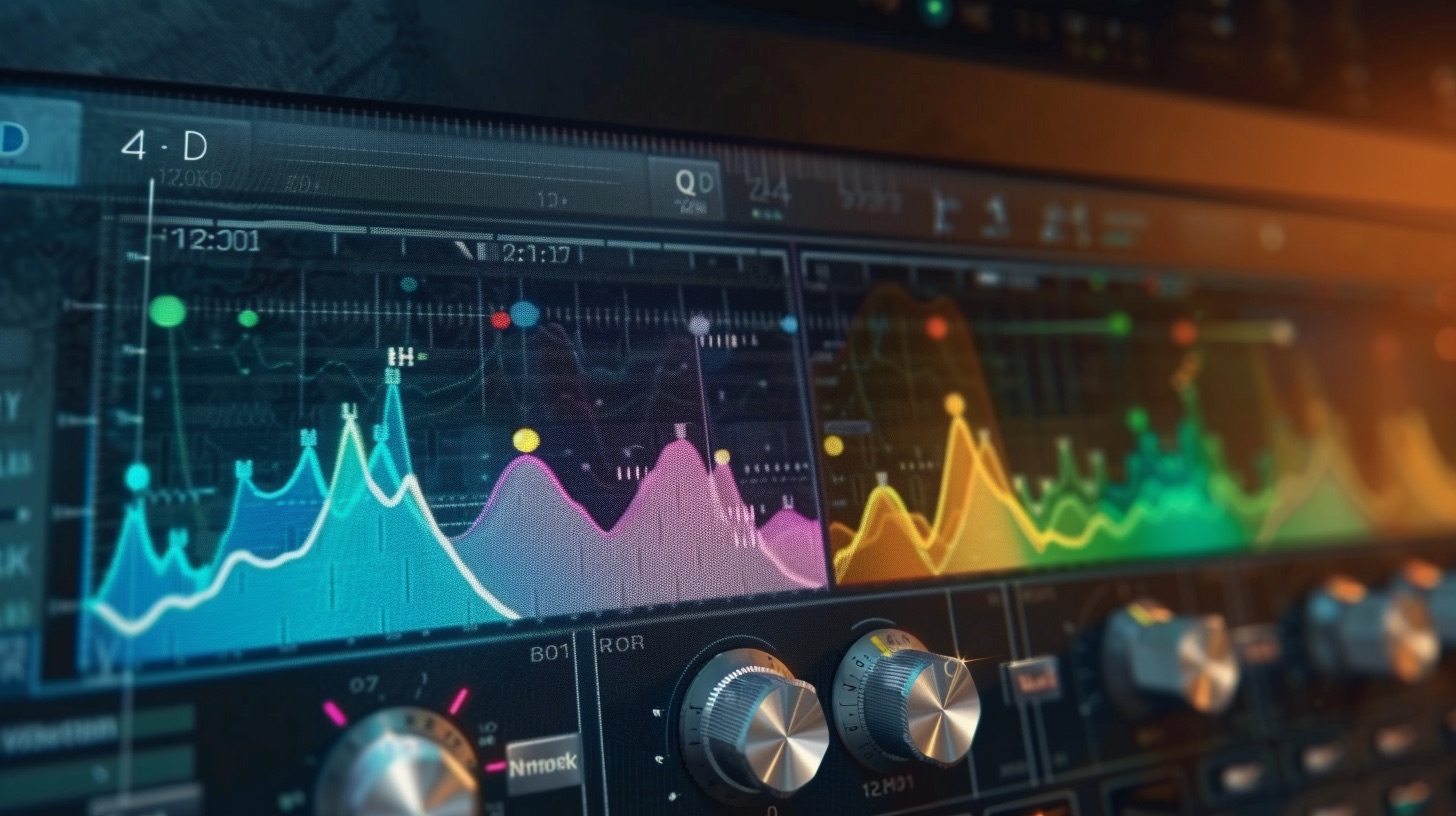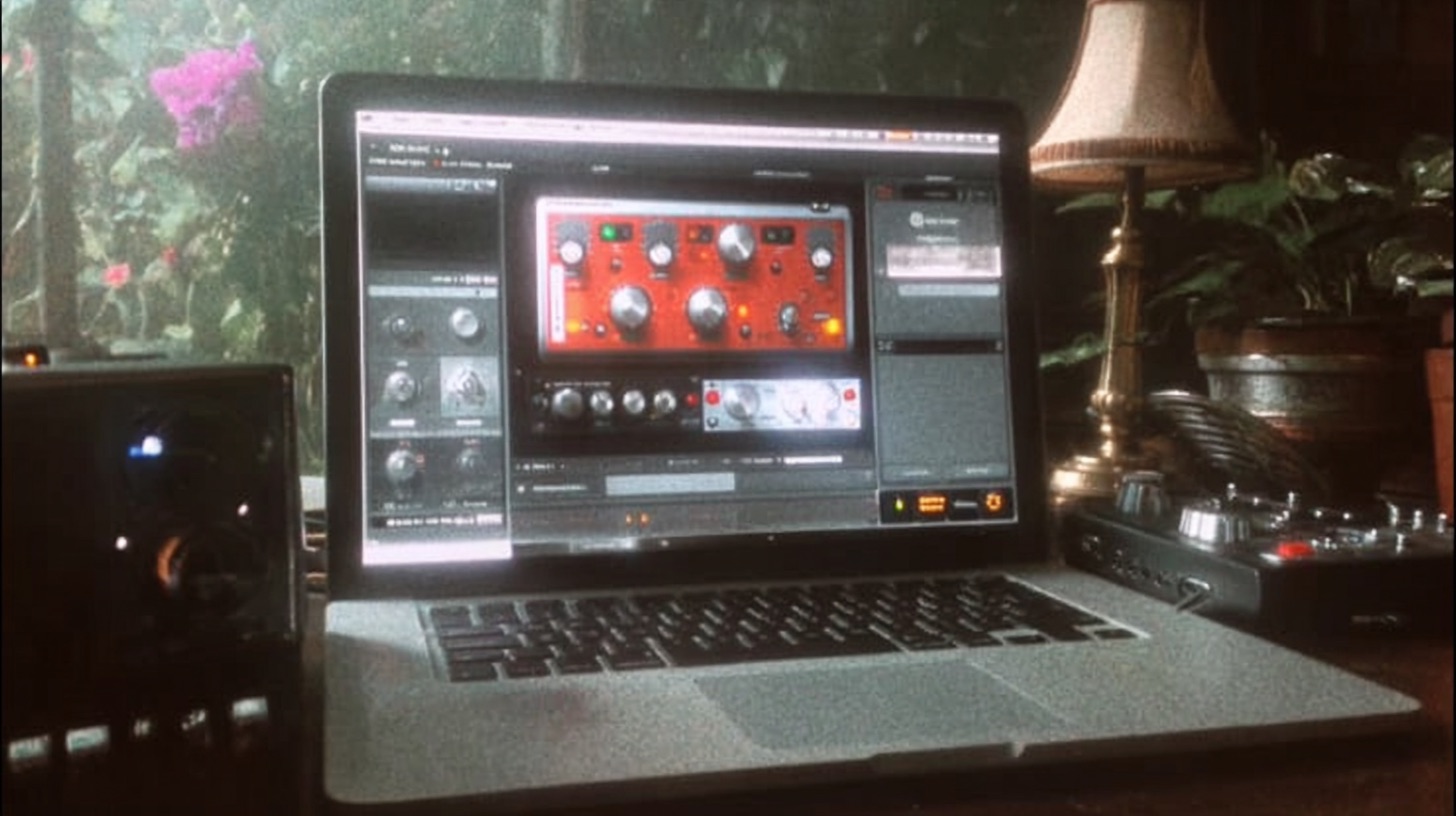
Transients: What metal mixers need to know
Nail The Mix Staff
Ever wonder why some metal mixes hit you like a sledgehammer while others feel… kinda mushy? A huge part of that impact comes down to one critical element: transients. That initial whack of the kick drum, the snap of the snare, the percussive attack of a palm-muted guitar – these are all defined by their transients. In the dense, often chaotic world of a metal mix, getting your transients to cut through without sounding harsh or unnatural is a game-changer.
Forget just making things loud; we're talking about crafting sounds that have genuine power and definition. This isn't beginner stuff, so we'll dive right into how you can manipulate transients to make your metal tracks truly slam.
Why Do Transients Even Matter in Metal?
In a genre defined by aggression and intensity, transients are your best friends. They're the short, high-energy bursts at the very beginning of a sound.
- Impact & Punch: This is the big one. Well-defined transients are what make drums feel like they're physically hitting you, and what gives guitars that percussive "thwack."
- Clarity & Definition: In a wall of distorted guitars and thundering drums, transients help each instrument carve out its own space. You can actually hear the beater hit the kick drum head, or the pick strike the guitar string.
- Groove & Excitement: The precise timing and attack of transients contribute massively to the rhythmic feel. Think about the intricate kick patterns in tech-death or the satisfying chug of a djent riff – transients are key.
Without proper transient control, your mix can easily turn into an undefined roar. But get them right, and youe;re on your way to a professional, hard-hitting metal sound.
Your Toolkit for Transient Domination
Alright, let's get into the nitty-gritty. You've got a bunch of tools in your DAW (be it Pro Tools, Reaper, Logic Pro X, Cubase, or whatever your weapon of choice) to shape these crucial sound spikes.
Compressors: The Classic Transient Shapers (and Tamers)
We all know compressors are essential in metal, but they’re not just for controlling dynamics; they’re incredible for shaping transients. The attack time is your golden ticket here:
- Slow Attack (e.g., 10-50ms+): This lets the initial transient pass through before the compressor clamps down. The result? The transient becomes more prominent, adding punch. Perfect for kicks, snares, and even toms.
- Kick Drum Example: Try an API 2500 or a dbx 160 emulation. Set a slow attack (maybe 30ms), a medium to fast release (50-100ms so it recovers before the next hit), and a ratio around 4:1. Aim for a few dB of gain reduction. You'll hear the "thump" get more pronounced.
- Fast Attack (e.g., under 5ms, sometimes microseconds): This grabs the transient almost immediately, taming it. Useful if a transient is too pokey, clicky, or making an instrument jump out too much.
- Snare Drum Example (Control): An 1176-style FET compressor (like a UAD 1176LN, Waves CLA-76, or Arturia FET-76) on its fastest attack setting ("all buttons in" mode if you're feeling brave, or just the fastest dial setting) can really smooth out an overly aggressive snare transient, making it sit better.
- Snare Drum Example (Enhancement with Parallel): Conversely, you can CRUSH a snare with an 1176 in parallel (fast attack, fast release, high ratio) and blend it underneath the main snare to add sustain and body after a shaped transient.
Don't forget the release! A fast release can make things sound more aggressive and pumpy, while a slower release can smooth things out. Experiment!
Transient Designers: The Scalpels of Punch
These plugins are purpose-built for manipulating the attack and sustain portions of a sound. They're like magic wands for transients. Popular choices include the classic SPL Transient Designer, Native Instruments Transient Master, Waves Smack Attack, Eventide Physion/SplitEQ (which can do some insane frequency-specific transient shaping), or even Joey Sturgis Tones Transify.
Most have simple "Attack" and "Sustain" knobs:
- Attack: Turn it up to emphasize the transient, making it sharper and punchier. Turn it down to soften it.
- Sustain: Turn it up to increase the body/length of the sound after the transient. Turn it down to tighten things up, making sounds shorter and more staccato.
Beefing Up Limp Drums (Kick, Snare, Toms)
Got a kick that sounds more like a pillow than a cannon? Add some Attack with a transient shaper. Snare not cracking through? Boost its Attack. Toms sounding a bit flabby and indistinct? Increase Attack and maybe decrease Sustain to tighten them up. This is often more transparent than trying to achieve the same with just compression or EQ. Try the SPL Transient Designer on a drum bus with a slight Attack boost for instant glue and punch.
Adding Snap to Guitars and Bass Pick Attack
For those tight, percussive metalcore chugs or djenty rhythms, a transient designer can really bring out the pick definition. A subtle boost to the Attack on your rhythm guitar bus, or even individual tracks, can make those palm-mutes super clear. Same goes for bass – if the finger or pick attack is getting lost, a transient shaper can help it cut.
Taming Roomy Overheads or Wild Cymbals
Sometimes, the room sound captured in overheads can wash out the direct hit of the cymbals, or a particular crash is just too splashy. Dialing back the Sustain knob on a transient shaper applied to your overheads or cymbal group can help tighten things up significantly, focusing the sound on the initial hit.
EQ: Sculpting Frequencies Around Transients
While not directly a "transient shaper" in the same way, EQ plays a massive role in how we perceive transients.
- Boosting Attack Frequencies: The "click" of a kick beater often lives around 3-5kHz. The "crack" of a snare can be anywhere from 2kHz up to 8kHz. The "pick" sound on a guitar is often in the 2-7kHz range. A careful boost in these areas with a plugin like the FabFilter Pro-Q 3 can make transients seem punchier.
- Cutting Mud: Those pesky low-mid frequencies (roughly 200-500Hz) can often mask transients, especially on drums and low-tuned guitars. Scooping some of this out can instantly make your transients feel clearer and more impactful.
- Dynamic EQ: This is where it gets really cool. A dynamic EQ (like FabFilter Pro-Q 3 or Waves F6) allows you to boost or cut a frequency band only when the signal exceeds a certain threshold – perfect for shaping transients. For example, you could set a dynamic band to boost 5kHz on a snare only when the snare actually hits, adding crack without making the overall snare sound too harsh when it's not playing.
Gates & Expanders: Cleaning Up and Accentuating
A noisy drum recording with lots of bleed can really obscure your transients.
- Tightening Drum Shells: A well-set gate (like FabFilter Pro-G or the gate in the SSL Drumstrip) on toms or even the kick and snare (if bleed is an issue) can clean up the space around the hits, making the transients themselves pop out more. Set the threshold so only the direct hit opens the gate, and adjust the hold and release to avoid cutting off the natural decay too abruptly.
- Expansion: An expander is like a gate but with a ratio. It can increase the dynamic range, making loud parts (like transients) louder and quiet parts (like bleed or room tone) quieter. This can add a lot of punch, especially to percussive elements.
Saturation & Clippers: Adding Perceived Edge (Carefully!)
This is more about perceived punch and edge than direct transient shaping, but it’s super relevant in metal.
- Saturation: Subtle harmonic distortion from plugins like Soundtoys Decapitator, FabFilter Saturn 2, or even a simple Softube Saturation Knob can add harmonics that make transients feel more aggressive and cut through better, without actually increasing their peak level much. Great on drums, bass, and even vocals.
- Clippers: Tools like Kazrog KClip or StandardCLIP are used to shave off the very tips of transients. This might sound counter-intuitive, but by controlling the absolute peak, you can then bring up the overall level of the track, making it sound louder and punchier because the body of the sound is closer to the (now controlled) peak. Use with extreme caution, as overdoing it leads to nasty, squared-off distortion. Often used on drum busses or even the master bus in very small doses.
Real-World Metal Scenarios: Putting Transient Control to Work
Let’s look at some common metal mix problems and how transient know-how can solve them.
The Kick Drum: Foundation of Fury
- Problem: Kick sounds like a flabby pillow, gets lost under the guitars, or has no definition in fast double-bass patterns.
- Solutions:
- Sample Layering: Often, metal producers will blend a punchy sample (using Slate Trigger 2 or Superior Drummer 3's tracker) with the acoustic kick. You can then shape the transient of the sample.
- Transient Shaper: Use NI Transient Master to add 3-6dB of Attack.
- Slow Attack Compression: As mentioned, an API 2500 or SSL G-Comp with an attack around 30-50ms.
- EQ: Boost the beater click (try 4-6kHz) and cut some boxiness (300-500Hz).
The Snare: Your Mix's Lethal Weapon
- Problem: Snare lacks crack, sounds thin, or disappears when the guitars kick in.
- Solutions:
- Transient Shaper: Waves Smack Attack is great here. Increase Attack, maybe slightly decrease Sustain if it's too ringy.
- Parallel Compression: Send your snare to an aux, smash it with an 1176 (all buttons in, fast attack, fast release), then blend that crushed signal back under the main snare. Adds body and aggression without sacrificing the main transient too much.
- EQ: Look for body around 150-250Hz and crack/snap from 2kHz up to 8kHz.
Guitars: From Chugs to Djent Clarity
- Problem: Palm-mutes are mushy, pick attack isn’t defined, fast riffs become a blur.
- Solutions:
- Tight Playing is #1: No amount of processing can fix sloppy playing. Get it right at the source!
- Transient Shaper (Subtle!): A tiny bit of Attack boost from something like SPL Transient Designer on a guitar bus can help. Too much will sound artificial and clicky.
- Multi-band Compression: Control the low-end boom of palm mutes without squashing the pick attack by using a multi-band compressor (like FabFilter Pro-MB) to target just the low frequencies (e.g., below 150Hz) with a faster attack.
- EQ: A slight bump in the upper mids (3-7kHz) can bring out pick definition.
Bass Guitar: The Low-End Anchor with Attitude
- Problem: Bass gets buried by detuned guitars or the kick drum, sounds undefined, or lacks percussive impact.
- Solutions:
- EQ for Definition: Often, the "attack" of a picked bass lives in the upper mids (800Hz-2.5kHz). Boosting this can help it cut through on smaller speakers.
- Transient Shaper on DI: If you have a DI signal, use a transient shaper to emphasize the pick/finger attack and blend it with your amped tone.
- Sidechain Compression (from Kick): This isn't direct transient shaping of the bass, but by having the kick drum momentarily duck the bass guitar, you create space for the kick's transient to punch through, which in turn can make the bass feel tighter and more defined in relation to it.

100+ Insanely Detailed Mixing Tutorials
We leave absolutely nothing out, showing you every single step
The "Oops, I Overdid It" Zone: Knowing When to Back Off
It's easy to get carried away. Suddenly your drums sound like a typewriter, and your guitars are all pick noise.
- Listen for "Clickiness": If transients become detached, pointy clicks rather than an integrated part of the sound, you've gone too far.
- Thinness: Over-emphasizing attack without enough sustain can make instruments sound thin and weak.
- Harshness: Aggressively boosting high-frequency transients can quickly lead to a harsh, fatiguing mix.
- Context is King: Always make these decisions in the context of the full mix. A snare that sounds super punchy in solo might be way too much with everything else playing. Use reference tracks of your favorite metal albums to keep your ears calibrated.
Ready to See Transient Shaping in Action?
Mastering transients is a journey, but it's one of the most rewarding skills you can develop for mixing metal. Being able to precisely sculpt the impact and clarity of each instrument is what separates an amateur mix from a pro-sounding release.
Imagine watching seasoned pros sculpt transients on real metal tracks, dialing in compressors, transient shapers, and EQ with surgical precision. Want to dive deeper and see exactly how producers like the ones behind bands like Periphery, Gojira, or Meshuggah nail this stuff on chart-topping metal albums? Nail The Mix gives you that front-row seat. Every month, you get the actual multi-tracks from huge songs and watch the original producers mix them from scratch, explaining every transient tweak, EQ move, and compression setting. You get to see them wrestle with these very concepts and hear the results in real-time.
If you're ready to go beyond presets and truly unlock your sound by mixing modern metal like the pros, check out what Nail The Mix has to offer.
Punch Through The Noise
Transients are the lifeblood of a punchy, clear, and aggressive metal mix. By understanding how to identify them and skillfully using tools like compressors, transient designers, EQ, gates, and even saturation, you can elevate your productions from muddy and undefined to powerful and articulate. So, fire up your DAW, grab some of these tools, and start experimenting. Your mixes will thank you for it!
Get a new set of multi-tracks every month from a world-class artist, a livestream with the producer who mixed it, 100+ tutorials, our exclusive plugins and more
Get Started for $1



